South Lebanon Army: Return of war-time 'collaborator' shines spotlight on brutal legacy of Israel's militia
Some 48 hours prior, the Israeli-backed South Lebanon Army (SLA), which had operated the jail, dramatically collapsed as Israel's 22-year occupation of south Lebanon suddenly unravelled.
Chanting "Freedom! Freedom!" as they stumbled into the light, the liberation of Khiam's prisoners was a powerful event marking the chaotic withdrawal of Israel's forces and the disintegration of its proxy militia, many of whose fighters subsequently fled with their families to Israel or abroad.
The recent return to Lebanon of former SLA member Amer Fakhoury - accused of once overseeing torture at the same prison - has reopened old wounds, casting a spotlight on the forgotten role of the SLA during and after the civil war, and the fate of those who collaborated with Israel's occupation.
'Free State of Lebanon'
The SLA was an outgrowth of Major Saad Haddad's 'Army of Free Lebanon' forces, a predominantly Christian splinter group of Lebanon's military which had broken apart into sectarian factions as the state fractured following the onset of civil war in 1975.
Haddad - a right-wing Greek Catholic native of Marjayoun - founded his militia to combat Palestine Liberation Organisation (PLO) fighters, who had created a de facto state within a state in south Lebanon since moving their main base of operations there after being expelled from Jordan.
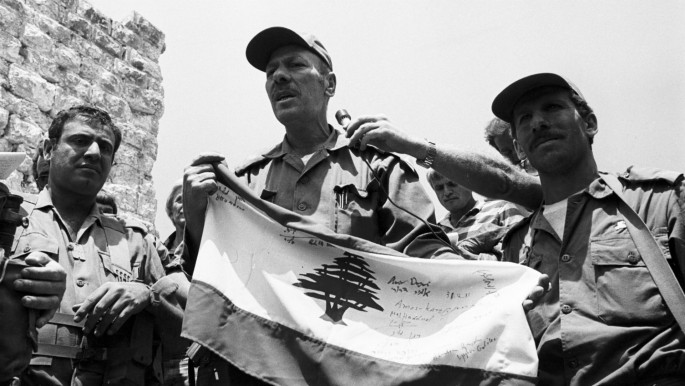 |
|
| Saad Haddad, the founder of the SLA, pictured in 1982 at Beaufort Castle following Israel's invasion. [Getty] |
Recognising south Lebanon as the new battlefield against the PLO - the area was referred to as 'Fatah-land' due to the concentration of fighters - Israel quickly allied with Haddad's forces, financing, arming and eventually commanding the group.
A key turning point in the SLA's rise came in 1978, when Israel launched Operation Litani to repel PLO fighters from the border zone, after Fatah militants hijacked a bus in northern Israel killing 38 civilians. The Israeli-led operation killed hundreds of Lebanese civilians, with over 200,000 displaced.
Following a ceasefire, and the subsequent creation of the UNIFIL peacekeeping force, Israel partially withdrew and handed over authority of a newly established security zone to Haddad's militia, who served as an auxiliary Israeli force. It quickly became a SLA fiefdom.
Extracting taxes from residents and ruling as a de facto government, a year later Haddad declared the creation of the state of 'Free Lebanon', with Israel's tacit approval. The self-proclaimed state however failed to gain any international recognition.
 |
Recognising south Lebanon as the new battlefield against the PLO, Israel quickly allied with Saad Haddad's forces |  |
Israel is estimated to have funded the group to the tune of $35 million annually and issued permits allowing family members of militiamen to cross the border and work in factories and fields, creating an open border policy.
The south Lebanese warlord's new 'state' had a population of around 60,000 Shia Muslims and 40,000 Christians ruled over by an officer class of 1,500 largely Maronite militiamen, but included sizeable Shia and Druze members, whose declared aim was to free Lebanon from Palestinian, and later, Syrian influence.
In the coming years, south Lebanon would become one of the world's most explosive flash points, an extension of the Israeli-Palestinian conflict which had three decades prior created the State of Israel and displaced some 300,000 Palestinian refugees to Lebanon.
Israel's invasion and occupation
Haddad, operating independently of the Beirut government and divided Christian factions, renamed his militia the South Lebanon Army in 1980 and under Israeli auspices consolidated control of the security zone, roughly 10 percent of the country's surface area.
In 1982 Israel invaded Lebanon again, ostensibly to destroy the PLO but also to politically reshape the country and produce a pro-Israel anti-Palestinian regime in Beirut led by Bashir Gemayel, the leader of the powerful Maronite Lebanese Forces (LF) militia. Up to 20,000 civilians were killed in the Israeli offensive.
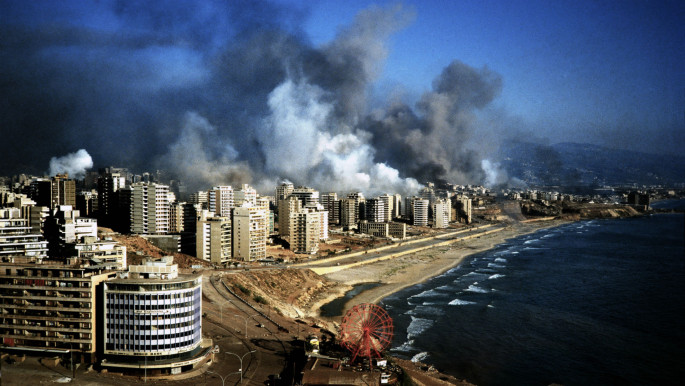 |
|
| Israel heavily shelled West Beirut during its 1982 invasion. [Getty] |
After seizing the entire southern half of Lebanon, Israeli forces marched northwards, with the SLA militia reportedly escorting them as they entered and besieged Beirut, eventually forcing the evacuation of PLO fighters to Tunisia.
The militia would go on to take part in the one of the Lebanese civil war's most brutal incidents: the Sabra and Shatila massacre.
Israel, now in control of west Beirut, allowed Christian militia forces to avenge Gemayel's assassination, standing guard and firing flares as militiamen slaughtered between 460 and 3,500 Palestinian refugees in west Beirut.
Multiple press reports and eyewitness statements corroborated an SLA presence during the massacre, whose members were conspicuous for their lack of LF insignia, southern Lebanese accents, and Shia militia members.
In 1984 Haddad died, and Antoine Lahad, a Maronite former army general, was named leader of the SLA. With the PLO largely gone, Amal and the ascendant Hezbollah movement took over the battle to liberate south Lebanon, with frequent raids and Israeli and SLA reprisals in the occupation zone.
The SLA was a critical component of Israel's security network in the south, absorbing attacks as a buffer between Shia militia and its northern communities. The economy of the region was dependent on Israeli support, with SLA fighters paid anywhere from $500 to $800 a month, thought to be nearly ten times the average local wage.
 |
South Lebanon would become one of the world's most explosive flash points, an extension of the Israeli-Palestinian conflict amid Lebanon's civil war |  |
As the civil war ended the group's numbers began to fall, with Lebanese intelligence services and Hezbollah infiltrating the group and weakening morale. Hezbollah and the SLA were the only two main militias not to have disarmed after the Taif Accords, which put an end to the 15-year-long civil war.
Israel, however, remained deeply entrenched in the south, leading to a low intensity conflict for a decade and a major incursion in 1996 which killed 100 Lebanese civilians sheltering at a UN base in Qana. The SLA, pejoratively nicknamed "Israel's sandbags", remained steadfast allies in the security zone.
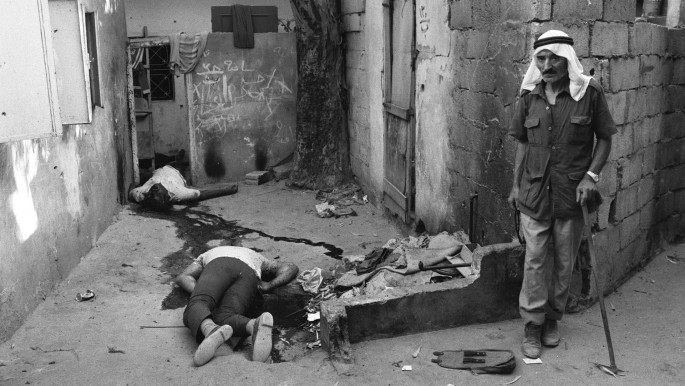 |
|
| The 1982 massacre of Palestinian refugees in Sabra and Shatila was one of the Lebanese civil war's most brutal events. [Getty] |
SLA leader Antoine Lahad survived multiple assassination attempts, including an attack carried out by 21-year-old Lebanese Communist Party female commando Suha Bechara in 1988.
The young militant from a Christian Orthodox family disguised herself as an aerobics teacher before shooting him twice.
Lahad fled to Israel after the SLA collapsed and died in Paris in 2015, having been sentenced to death in absentia in Lebanon for treason. Bechara was later imprisoned at the notorious Khiam prison where she was held for six years.
Viewed as a hero of the resistance, she spearheaded the opposition to Amer Fakhoury's return to Lebanon last year.
Khiam prison
The Khiam prison is one of the most painful legacies of the SLA's history in occupied south Lebanon.
Once a French army barracks, the SLA converted the site into a torture den in 1985 after capturing it from the Lebanese Army years earlier during Israel's Litani Operation.
Around 5,000 people passed through Khiam prison, mainly Hezbollah affiliates or anyone opposed to Israel's occupation. The youngest detainee to be ever held there was only 12-years-old.
 |
The Khiam prison is one of the most painful legacies of the SLA's history in occupied south Lebanon |  |
Operating as lawless bandits, many were detained by the SLA simply for refusing to pay extortion taxes or for persuading their sons not to join the militia. Other times the jail was a place where SLA members would settle old scores.
International human rights groups documented that Israeli intelligence had direct involvement in the jail and were often present during interrogations, with testimonies from former detainees detailing horrific torture methods.
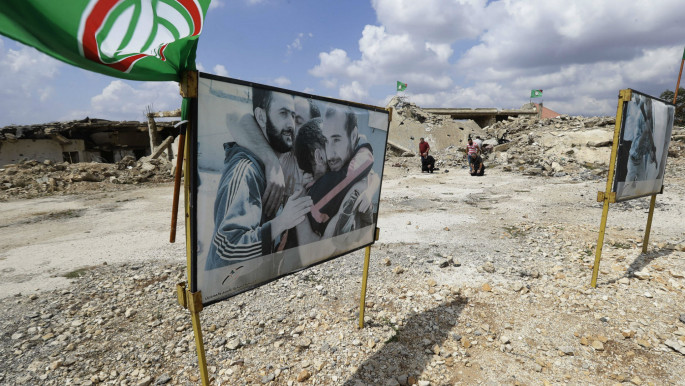 |
|
| An estimated 5,000 Lebanese civilians were detained and tortured in Khiam prison. [Getty] |
Beatings with electric cables were routine at the jail, with detainees hung naked from posts for hours and held in solitary confinement in perpetual darkness. Prisoners were often doused with water and then electrodes were attached to their fingers, tongue, earlobes, nose or genitals before being administered with painful electric shocks.
The screams of men and women being tortured could even be heard from nearby UN posts. Detainees were also deprived of sleep, food and basic hygiene.
Amer Fakhoury, nicknamed the 'Butcher of Khiam', was thought to be one of two top officials at the detention centre and reportedly served in his position for over a decade.
Collapse, exile and return
On May 24, 2000 Lebanon became whole again as Israel's long and bloody 22-year occupation ended in a chaotic three days. A year earlier newly-elected Israeli Prime Minister Ehud Barak had promised to end the unpopular war, which Israelis viewed as their very own Vietnam.
The SLA, whose officers accused Israel of "betrayal", collapsed as Israeli troops withdrew in the middle of the night. Abandoning dozens of military posts, Hezbollah became the new masters of the area, tearing down the statue of Saad Haddad in Marjayoun and dragging it through the streets.
Fearing retribution - Hezbollah leader Hassan Nasrallah had called to "slaughter the SLA in their beds" - over half of the SLA's 2,500 or so soldiers surrendered to the Lebanese army and Hezbollah, while the rest fled to Israel.
 |
The South Lebanon Army dramatically collapsed as Israel's 22-year occupation of south Lebanon suddenly unravelled |
 |
Active for over 20 years, Israel's proxy militia had disintegrated within a matter of weeks.
SLA fighters who remained in Lebanon, largely Shia and Sunni lower rank recruits who joined because of economic necessity or coercion, were tried but received light custodial sentences and fines.
Around 6,000 high ranking Christian officers and their families fled to Israel, before some left for third party countries. At least 15 were sentenced to death in absentia for actions committed during the Israeli occupation.
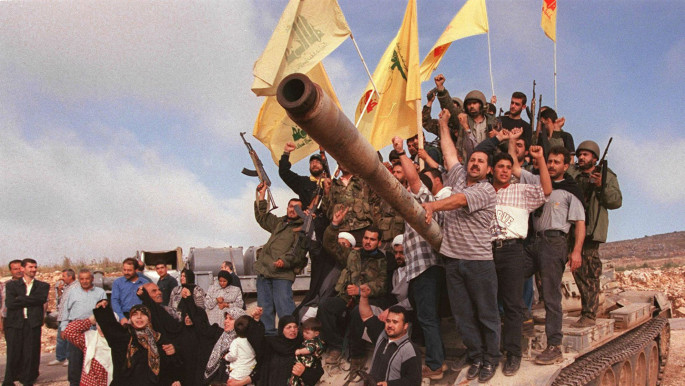 |
|
| Israeli forces withdrew from south Lebanon in 2000. [Getty] |
Their legacy, synonymous with occupation, conflict and collaboration, has remained a contentious chapter of Lebanon's past ever since.
A 2006 memorandum between the Christian-dominated Free Patriotic Movement (FPM) and Hezbollah pledged to make the return of SLA fighters and their families possible, but for many they were collaborators of Lebanon's own Vichy regime.
In 2011, the Lebanese parliament adopted a law drafted by the FPM allowing those who left the country in 2000 to return. In 2014, meanwhile, the head of the Maronite Church Bechara Rai met with SLA exiles during an Israel visit in 2014, provoking further controversy in Lebanon.
While Fakhoury's return crystallised pre-existing polarisation about accountability for the SLA's crimes as enforcers of Israel's occupation, it also raised the wider issue of how to implement justice nearly twenty years on from the end of the civil war.
The Taif Accords, while ending the war, institutionalised conflict and granted impunity to warlords responsible for grave crimes, creating a frail, corrupt and fractious ruling order which thousands of Lebanese have been protesting to overhaul since October 2019.
Charlie Hoyle is a journalist at The New Arab.




 Follow the Middle East's top stories in English at The New Arab on Google News
Follow the Middle East's top stories in English at The New Arab on Google News


